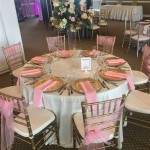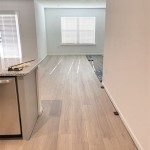How Can We Decorate Our Classroom
Classroom decoration plays a pivotal role in fostering a positive and effective learning environment. A well-decorated classroom can stimulate creativity, enhance engagement, and contribute to a sense of belonging for students. It transforms a simple space into a vibrant hub of learning, supporting the educational process and promoting a more comfortable and stimulating atmosphere.
Numerous elements contribute to effective classroom decoration, extending beyond mere aesthetics. Color schemes, lighting, organization, and the incorporation of student work are all critical considerations. Each of these factors impacts student perceptions and their capacity to learn effectively. Therefore, a thoughtful and strategic approach is essential to maximize the benefits of classroom decoration.
Creating a Welcoming and Stimulating Atmosphere
The atmosphere of a classroom significantly impacts student motivation and engagement. A welcoming and stimulating environment can encourage active participation, reduce anxiety, and foster a positive attitude towards learning. This involves careful attention to several key aspects.
Color psychology suggests that different colors evoke specific emotional responses. Warm colors like yellow, orange, and red can be stimulating and energizing, suitable for areas where active engagement is desired. Cool colors such as blue, green, and purple, on the other hand, can create a calming and relaxing atmosphere, appropriate for reading corners or areas designated for quiet study. A balanced approach, incorporating both warm and cool colors in appropriate proportions, can create an environment that is both stimulating and comfortable.
Natural light is highly beneficial for student well-being and cognitive function. Maximizing natural light through strategically positioned desks and minimal window obstructions can greatly enhance the learning environment. Where natural light is limited, artificial lighting should be carefully considered. Bright, full-spectrum lighting can mimic the benefits of natural light, while softer, warmer lighting can create a more relaxing ambiance. Avoid harsh fluorescent lighting, which can cause eye strain and headaches.
The arrangement of furniture also contributes significantly to the classroom atmosphere. Flexible seating arrangements, allowing for individual work, small group collaborations, and whole-class discussions, can cater to diverse learning styles and needs. Consider incorporating comfortable seating options, such as beanbag chairs or cushions, in designated reading areas to encourage relaxation and enjoyment of reading. Clear pathways and defined spaces prevent clutter and ensure ease of movement within the classroom.
Incorporating Educational and Thematic Displays
Classroom displays should not only be visually appealing but also serve an educational purpose. Integrating curriculum-related posters, charts, and student work can reinforce learning concepts and provide constant reminders of key information. Thematic displays can also be used to celebrate different cultures, historical events, or scientific discoveries, broadening students' perspectives and fostering a sense of global awareness.
Curriculum-related displays should be aligned with the subject matter being taught. For example, a math classroom might feature posters illustrating geometric principles or multiplication tables. A science classroom could display diagrams of the human body or the periodic table of elements. The key is to present the information in a visually engaging and easily digestible format.
Student work should be prominently displayed to acknowledge achievement and foster a sense of ownership. Showcase a variety of student projects, including artwork, writing samples, and science experiments. This not only celebrates student effort but also provides valuable learning opportunities for other students. Rotate the displays regularly to keep the content fresh and engaging.
Thematic displays can enhance learning by providing context and making connections to the real world. Celebrate cultural diversity by showcasing artifacts, posters, and information related to different countries and cultures. Commemorate historical events with timelines, photographs, and stories. Explore scientific discoveries by displaying models, diagrams, and information about famous scientists and their contributions.
Interactive displays can further enhance engagement and learning. Incorporate touch-and-feel elements, puzzles, and games into the displays. Encourage students to contribute to the displays by adding their own thoughts, ideas, and artwork. This fosters a sense of collaboration and ownership, making the displays more meaningful and engaging.
Maintaining Organization and Minimizing Clutter
A well-organized and clutter-free classroom is essential for creating a conducive learning environment. Clutter can be distracting, stressful, and can hinder student concentration and focus. Implementing effective organizational strategies can create a more efficient and productive learning space.
Effective storage solutions are crucial for maintaining organization. Utilize shelves, cabinets, and drawers to store books, supplies, and equipment. Label everything clearly to ensure that items can be easily located and returned to their proper place. Consider using clear storage containers to allow for visual identification of contents.
Designated areas should be established for specific activities. Create a reading corner with comfortable seating and easy access to books. Set up a writing center with pencils, paper, and writing prompts. Designate a science area with equipment and materials for experiments. Clearly defined areas help students understand expectations and promote more focused engagement.
Regularly decluttering the classroom is essential for maintaining organization. Encourage students to take responsibility for their own belongings and to keep their desks and workspaces tidy. Conduct periodic clean-up sessions to remove unnecessary items and to reorganize the classroom. A collaborative effort in maintaining the classroom’s cleanliness encourages a sense of shared responsibility.
Implementing a system for managing paper flow can minimize clutter and reduce stress. Utilize filing cabinets or folders to organize student work, lesson plans, and other important documents. Consider using digital storage solutions for documents that do not need to be kept in hard copy. Regularly purging unnecessary papers can prevent clutter from accumulating.
In addition to physical organization, visual organization is also important. Use consistent fonts and color schemes for posters and displays. Arrange furniture in a way that is both functional and aesthetically pleasing. A visually organized classroom creates a sense of calm and order, promoting a more focused and productive learning environment.
The impact of classroom decoration extends beyond mere aesthetics. It is an integral part of creating a learning environment that supports student well-being, engagement, and academic success. By carefully considering color schemes, lighting, organization, and the incorporation of educational displays, educators can transform their classrooms into vibrant hubs of learning.

20 Best Classroom Decoration Ideas For Teachers

Classroom Decorations School Specialty

40 Excellent Classroom Decoration Ideas

40 Excellent Classroom Decoration Ideas

Classroom Decor Gallery Pacon Creative S

Classroom Decoration Idea Our Core Values Classdecoration Papercraft

Classroom Decor Decoration Ideas Oriental Trading

5 Creative Ways Teachers Can Use Paper To Decorate Classrooms Church

Budget Friendly Classroom Decorations Maneuvering The Middle

Classroom Decor Gallery Pacon Creative S








